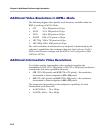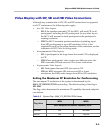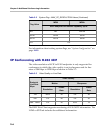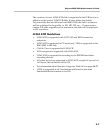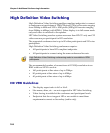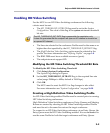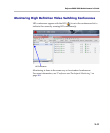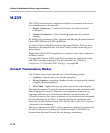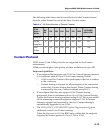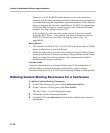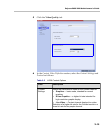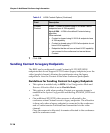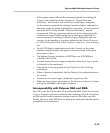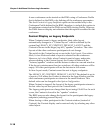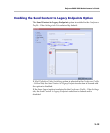
Chapter 2-Additional Conferencing Information
2-12
H.239
The H.239 protocol allows compliant endpoints to transmit and receive
two simultaneous video streams:
• People Conference – Continuous Presence or Video Switched
conference
• Content Conference – Video Switching conference for content
sharing
By default, all conferences, Entry Queues, and Meeting Rooms launched
on the RMX 2000 have H.239 capabilities.
To view Content, endpoints must use the same Bit Rate, Protocol, and
Resolution. An endpoint may not send Content while connecting to an
Entry Queue.
Endpoints without H.239 capability can connect to the video conference
without Content.
Cascade links declare H.239 capabilities and they are supported in Star
and MIH cascading topologies. For more details, see "Cascading
Conferences - H.239-enabled MIH Topology” on page 2-59.
Content Transmission Modes
The Content channel can transmit one of the following modes:
• Graphics – default mode, for standard graphics
• Hi-res Graphics – requiring a higher bit rate, for high quality display
or highly detailed graphics
• Live Video – highest bit rate, for video clips or live video display
The highest common Content bit rate is calculated for the conference each
time an endpoint connects. Therefore, if an endpoint connects to an
ongoing conference at a lower bit rate than the current bit rate, the
Content bit rate for the current conference is re-calculated and decreased.
Bit rate allocation by the MCU is dynamic during the conference and
when the Content channel closes, the video bit rate of the People conference
is restored to its maximum.
During a conference the MCU will not permit an endpoint to increase its
bit rate, it can however change its Content resolution. The RMX can
decrease the allocated Content bit rate during a conference.



